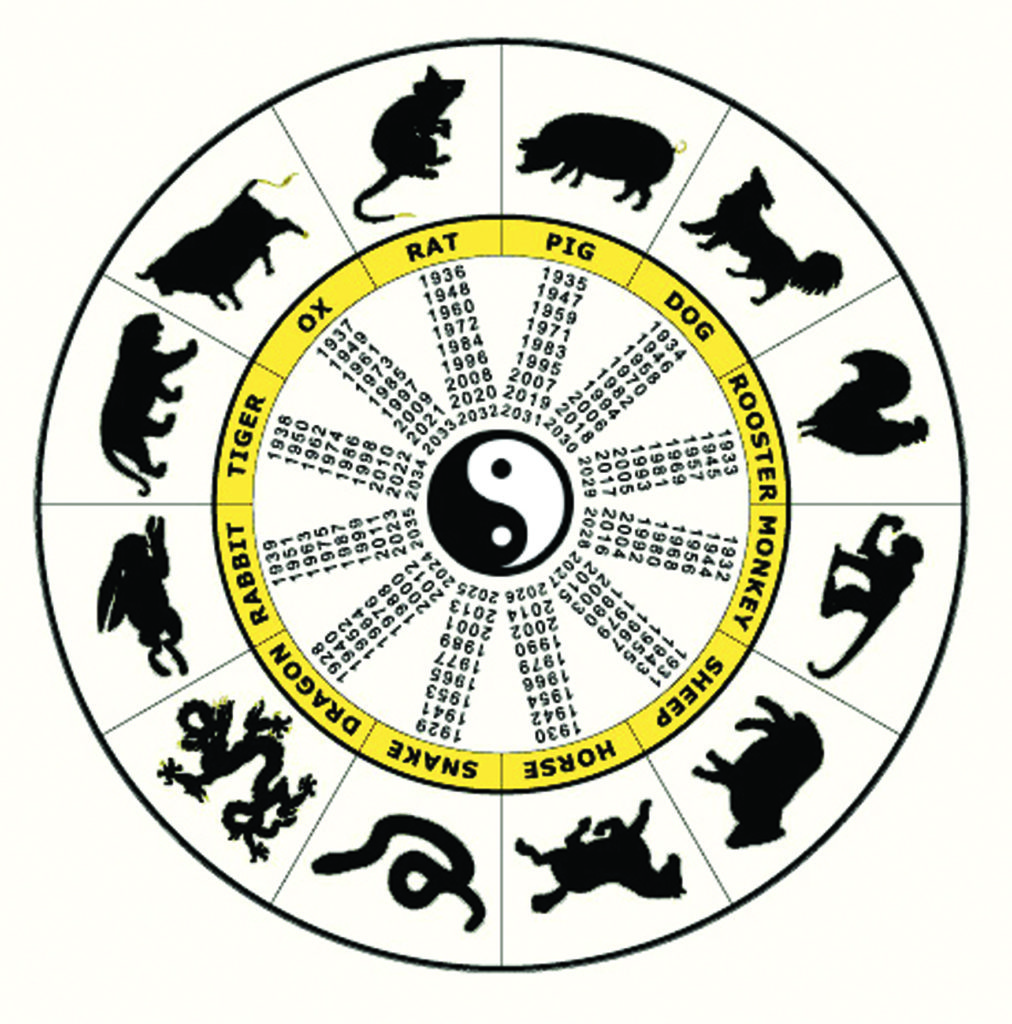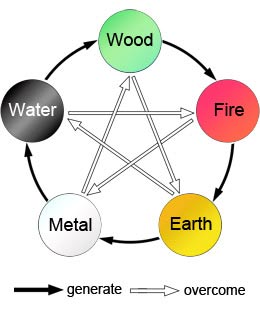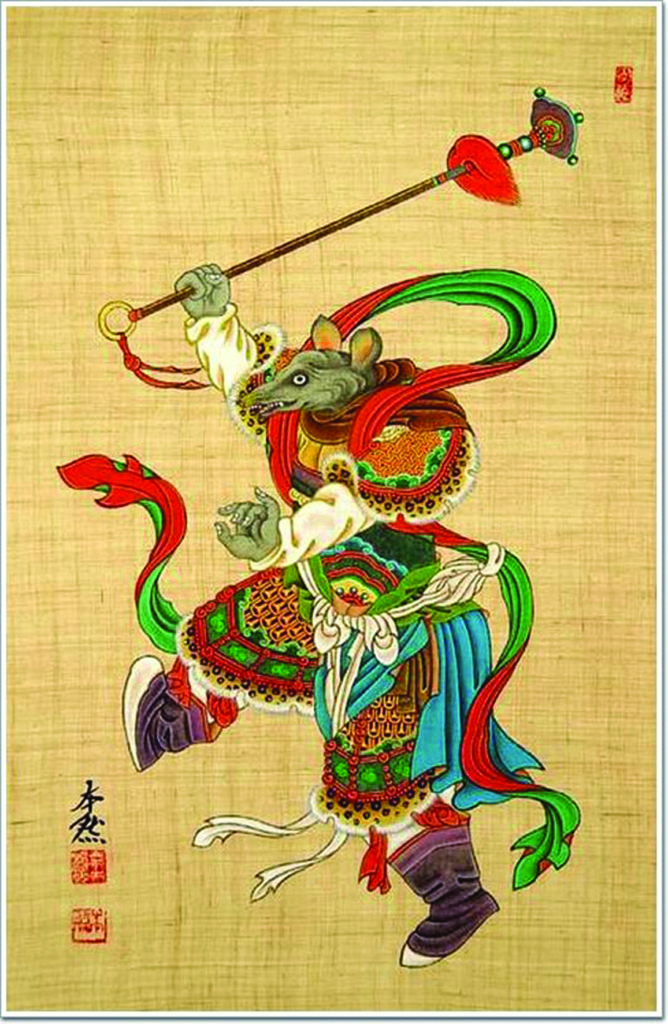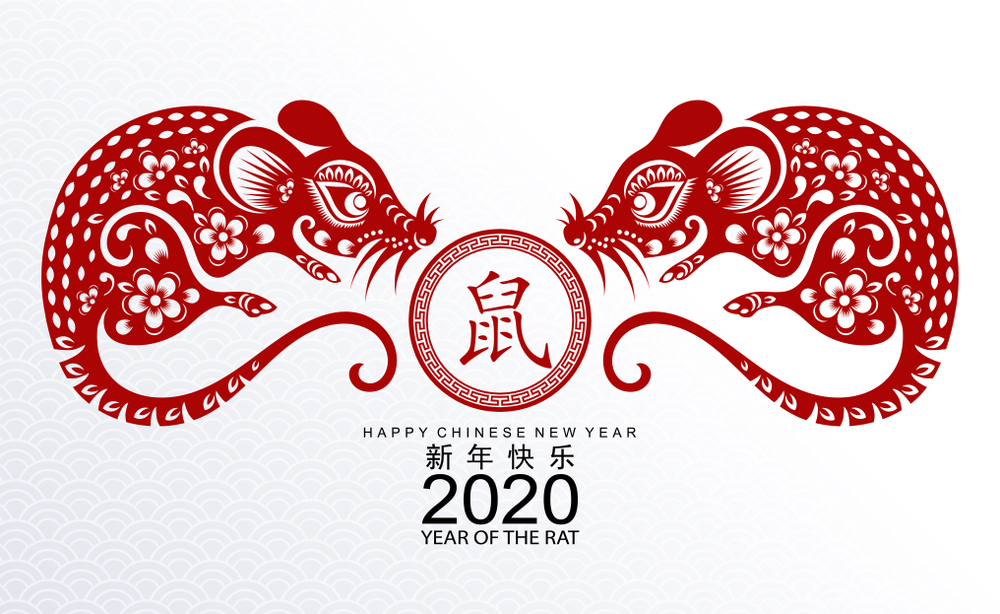Happy New Year – Rats!
Written by David Shaffer.
Happy New Year! Happy 2020! Happy Lunar New Year! Having two New Years to contend with in a single year – one solar, one lunar – is confusing enough, but one also hears the new lunar year being referred to as the Year of the Rat, or Gyeongja-nyeon, or the Year of the Metal Rat, or the Year of the White Metal Rat, or the Male Metal Rat (or is it “Yang”?); the befuddlement becomes baffling. Here we will try to unravel the uncertainty so that all of us who are firmly grounded in Gregorian calculations can rest assured that we are living in a single year for the next twelve months (or so).
As we all know, the new year begins on January 1 according to the Gregorian calendar (a.k.a. the Western calendar or the solar calendar). But we also see that the lunar new year begins on January 25 this year – “this year,” not every year – and ends on February 11, 2021. This is the “Year of the Rat,” and it is quite a bit longer than the 366 days of 2020. We will discuss the discrepancy in days later, but first let’s discuss why 2020 is a Rat Year.
The Twelve Earthly Branches

While Western astrology posits 12 zodiacal signs of roughly one month each in length, the oriental zodiac (a.k.a. Chinese zodiac, a.k.a. animal zodiac) is composed of 12 animal signs rotating each lunar year. These signs, in order, are rat (ja/자), ox (chuk/축), tiger (in/인), rabbit/hare (myo/묘), dragon (jin/진), snake (sa/사), horse (oh/오), sheep/goat (mi/미), monkey (shin/신), rooster/chicken (yu/유), dog (sul/술), and pig/boar (hae/해). This collection of signs is known as the twelve earthly branches (sip-i jiji/십이지지, or sip-i ji/십이지 for short). Last year, 2019, concluded the cycle with the Year of the Pig, so in 2020, the cycle begins anew with the Year of the Rat (and 2021 will be the Year of the Ox). Simple enough, right?
The Ten Heavenly Stems

Well, yes – but… But the Korean name for the year 2020 is Gyeong-ja-nyeon (경자년/庚子年), the gyeong-rat-year. So, what is this gyeong bit, and where did it come from? Well, it so happens that in addition to the 12 earthly branches involved in naming the years of the lunar calendar, there is another set of symbols, the 10 heavenly stems (cheon-gan/천간, or sip-gan/십간) that are involved in naming the years. These ten heavenly stems are, in order, gap (갑/甲), eul (을/乙), byeong (병/丙), jeong (정/丁), mu (무/戊), gi (기/己), gyeong (경/庚), sin (신/辛), im (임/壬), and gye (계/癸). These ten heavenly stems pair with the twelve earthly branches linearly to create the names of the years: the first stem (gap) pairs with the first branch (ja) to form (gap-ja), the second stem and the second branch form (eul-chuk), and so on, circling back to the beginning member of a set when the end is reached. The linear pairing continues for 60 pairs, until the rotation returns to gap-ja (the reader is invited to check this out). This sexagenary cycle is most prominent in Korean custom in celebrating one’s hwangap (환갑, 60th birthday). So, the seventh stem pairs with the first branch to form the year Gyeong-ja. Though every twelfth year, is a “something-ja” year, only once every 60 years does it pair with gyeong to form the year Gyeong-ja. (Comprehension quiz: What year will next year, 2021, be – the Year of the ___? And what will the Korean name for the year be? If you say “the Year of the Ox” and “Sin-chuk” (신축), you are correct!
The Five Elements

You have probably heard 2020 referred to as the Year of the Metal Rat. “Metal rat”! What in the world (or out of the world) is a metal rat? Well, the “metal” part comes from the Five Elements (오행/五行) of oriental philosophy, which are considered to be the foundation of all natural phenomena and all things in the universe. They play a central role in geomacy, which employs energy forces to harmonize the individual with their environment. The Five Elements – wood (목/木), fire (화/火), earth/soil (토/土), metal (금/金), and water (수/水) – are also applied to the naming of years. They are associated with the ten heavenly stems: Each element is associated with two stems. Wood is paired with the first two stems (gap and eul), fire with the second two, … and metal with the fourth two (gyeong and sin). Therefore, Gyeong-ja is a metal year, and next year, Sin-chuk, is also.
Yin–Yang
A quick Google search of “Year of the Rat,” will produce results that include items such as “Year of the Male Metal Rat” and “Year of the Yang Metal Rat,” and even “Year of the White Metal Rat.” What is all this about? How many kinds of rats does 2020 have?! Still only one, but there are a number of different things that the Year of the Rat (and each of the 12 branches) is associated with. We just discussed the association of the Five Elements with the 10 heavenly stems. It so happens that these are also associated with Yin-Yang philosophy. We saw that each of the Five Elements is associated with two consecutive stem, and for each pair of stems, the first is considered to be yang (양, yang) and the second yin (음, eum). In other words, each of the odd-numbered stems is a yang stem, and each of the even-numbered ones a yin stem. Since the gyeong stem is the seventh heavenly stem, it is a yang stem, making Gyeong-ja (2020) a yang year – the Year of the Yang Metal Rat.
In addition, yin and yang are associated with “female” and “male,” respectively, so 2020 can also be referred to as the “Year of the Male Metal Rat.” There is no female rat, however, because the gyeong stem is always associated with yang/male. The Five Elements are also each associated with a different color: wood–green, fire–red, earth–brown, metal–white, water–black. This association gives rise to the term “Year of the White Metal Rat,” though neither the metal nor the rat is considered to be white. These associations with the Five Elements as well as those of compass directions, seasons, weather conditions, planets, and numbers are all taken into consideration in geomancy predictions and foretelling future events.
Predictions

The Year of the Metal Rat, 2020, is predicted to be a good year. It is considered to be a year of new beginnings and renewals. Success is predicted in one’s undertakings. New opportunities will open up for earning money and for finding true love. The Year of the Metal Rat is to be a strong and prosperous year, as well as a year of good fortune for almost all oriental zodiac signs (i.e., the 12 earthly stems listed above). Everyone has one of these 12 zodiac signs depending on the year they were born in. Those born in 1948, 1960, 1972, 1984, 1996, and 2008 were born under the rat sign (쥐띠, jwi-tti); those born one year later were born under the ox sign (소띠, so-tti), and so on. It is to be a great year for founding and evolving. Individual determination will be forthcoming toward obtaining one’s goals and aspirations and in pursuing one’s hobbies. Businesses started in the Year of the Metal Rat and investments made in long-term projects have great chances for satisfactory results in the future, but one must take care to ensure that such projects are carefully planned and executed.
For those with rat, ox, monkey, and dragon as their zodiac signs, the best months of 2020 are to be May, June, August, and October. Care should be taken not to fall prey to jealousy. Beware of arguments occurring especially in April and November. Starting a new relationship or marriage is not recommended for February, July, September, or November. Compromise and patience are recommended to avoid misunderstandings. In making plans, it is advisable to be as realistic as possible. Those born under the rat, ox, and dragon shall enjoy stable health but should guard against possible accidents.
The Year of the Rat is predicted to be one of ups and downs for those born under the signs of the tiger, pig, rooster, and snake. They should guard against jealousy and spend more time tending to their relationships. The best months for marriage are March and December. Being natural leaders, their business sense is at a peak, and it is a good year for investment, but they should avoid borrowing in June. Health should be a concern this year as the vital life force is weak.
February, May, July, August, September, and November are the best months of the Metal Rat Year for those born under the rabbit, sheep, horse, and dog signs. However, they will experience repeated periods of good times and bad. They should focus on putting extra effort into their relationship with their partner. Quarrels may occur out of a lack of a sense of self-confidence, but it is a good year to have children! They need to make the best of their opportunities by making solid, realistic plans. Generating an income should not be problematic, but they must guard against others talking behind their back. They will enjoy excellent health as long as they do not become preoccupied with work and making money.
Leap Month
The oriental lunar calendar, like the Gregorian calendar, consists of twelve months. However, lunar months are only 29 or 30 days in length, making a lunar year only about 354 days long. While the Gregorian calendar employs the addition of an extra day every four years, the lunar calendar inserts an intercalary month to realign the months with the seasons every few years. The extra month is called a “leap month,” or yun-dal (윤달) in Korean. Coincidentally, 2020 is both a Gregorian leap year and a lunar leap month. There are seven leap months in 19 years, with one leap month occurring every 2–3 years. The lunar leap month is inserted between different months in this 19-year rotation for more exact alignment with the seasons. This year, the lunar leap month follows the fourth lunar month, sa-wol (사월) and takes the name of the month it follows with the prefix yun (윤) attached: yun-sa-wol (윤사월). So, when is it this year? May 23 through June 20. People born in a leap month who celebrate their birthday according to the lunar calendar celebrate it on the same date in the previous month.
Since a lunar leap month has long been believed to contain no impurities or misfortune, it was traditionally considered to be an auspicious time for marriage, house repair or moving, gravesite maintenance, and the making of mourning garments. The common saying was “No harm can be done even if you hang a corpse upside down in a leap month.” Buddhists were allowed to engage in virtuous deeds for themselves that they would normally be forbidden from doing. In Gochang, in Jeollabuk-do, the ritual of walking around the town’s fortified wall took place in the belief that this would provide them with entrance into Paradise.
Among Korea’s multitude of superstitions, there were a number associated with the leap month. It was believed that there were no spirits roaming in a leap month to affect human affairs, as they were unable to recognize a leap month. This meant that there were no evil spirits to interrupt passage to the afterlife. However, it also meant that there were no good spirits around to protect against misfortune. Accordingly, with time, it came to be believed that it would be best to avoid marriage and similar family affairs during a leap month. To this day, wedding halls experience somewhat less business during leap months.
Here’s wishing good fortune and abundant success to all in the Year of the Metal Rat!
Graphics Credits
12 Earthly Branches: http://blog.naver.com/kh0831roh/220583971953
Gyeong-ja: fengshuiweb.co.uk
Five Elements Chart: travelchinaguide.com
The Rat Earthly God: m.blog.daum.net/jennysim/15900468
The Author
David Shaffer is a long-time resident of Gwangju. In 2020, he will be spending his fifth Year of the Rat here. He has written about the lunar calendar and Lunar New Year customs in Seasonal Customs of Korea (Hollym). Dr. Shaffer is the chairman of the board at the Gwangju International Center and the editor-in-chief at the Gwangju News.




